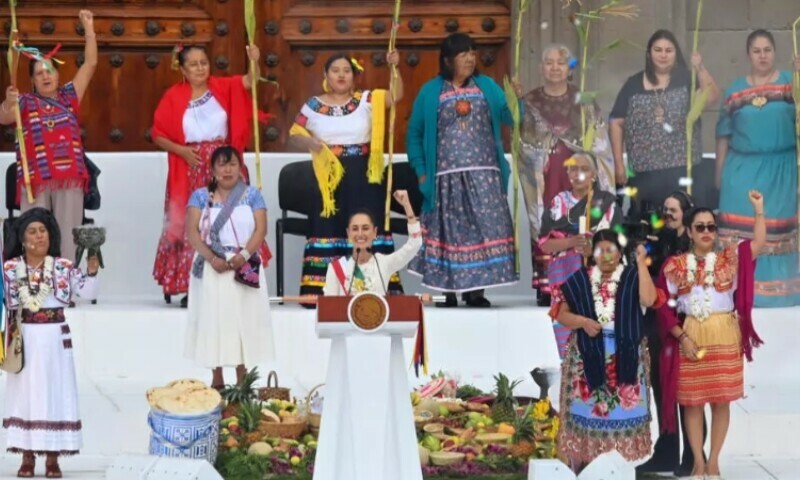MEXICO CITY: A Spanish documentary extolling the virtues of the country’s conquest of the Americas now showing in Mexico has added fuel to a politically charged debate over the legacy of colonialism.
“Hispanic America: A Song of Life and Hope” by Spanish director Jose Luis Lopez-Linares claims to offer “a new vision” of the colonial period.
Shot in Mexico, Peru, Ecuador and Bolivia, it depicts the Spanish as having had a civilising impact on the Americas, bequeathing a proud heritage of Catholicism and art, including lofty Baroque-inspired Spanish colonial architecture.
It makes no mention of the abuses committed in the name of evangelising the Indigenous peoples of the New World. The film’s release in Mexico comes hot on the heels of a fallout between Mexico’s new president Claudia Sheinbaum and the Spanish government.
Sheinbaum outraged Madrid by barring Spanish King Felipe VI from her inauguration ceremony earlier this month for failing to apologise for atrocities committed during the 1519-1521 Conquest of Mexico and the ensuing three centuries of colonial rule.
“It’s a rubbish, manipulative and racist piece of propaganda that attempts to rewrite history,” Mexican journalist Jose Juan de Avila, who attended a VIP screening of the film this week in Mexico City, complained.
Competing narratives
The film’s release also coincided with the anniversary of Italian-born explorer Christopher Columbus’s arrival in the New World on Oct 12, 1492, which paved the way for the colonisation of the Americas.
The date is a national holiday in Spain, where it is widely known as Hispanic Day. But in Mexico and other Latin American countries it is known as Dia de la Raza (Day of the Race), a commemoration of native resistance against the Conquest and of cultural diversity.
“The Conquest was a violent act,” Sheinbaum reiterated on Wednesday, adding that she wanted to “reconstruct the past” to strengthen relations between Spain and Mexico.
For Spanish author Carlos Martinez Shaw, the film draws on the ideology promoted by late Spanish dictator Francisco Franco, who pushed the “unbridled glorification” of colonialism.
Some Mexicans, however, subscribe to the view advanced in Lopez-Linares’s documentary that the Conquest was a source of enlightenment. When Avila, the journalist, challenged the director at the screening for his “shameful” depiction of the colonial period, he was shouted down by audience members, mostly Mexicans of European descent.
Juan Miguel Zuzunegui, a philosopher and staunch defender of Mexico’s Hispanic heritage who is interviewed in the film, called it a message of “love in the face of hate speech.”
‘Heroes and saints’
Mesoamerica, a region that comprised parts of Mexico and Central America, had an estimated population of 15 million to 30 million people when conquistador Hernan Cortes arrived with an army of several hundred men, bringing horses, swords, guns — and smallpox — in 1519.
After a century of battles, massacres and plagues, only an estimated one million to two million Indigenous inhabitants remained.
Published in Dawn, October 13th, 2024





Leave a Reply